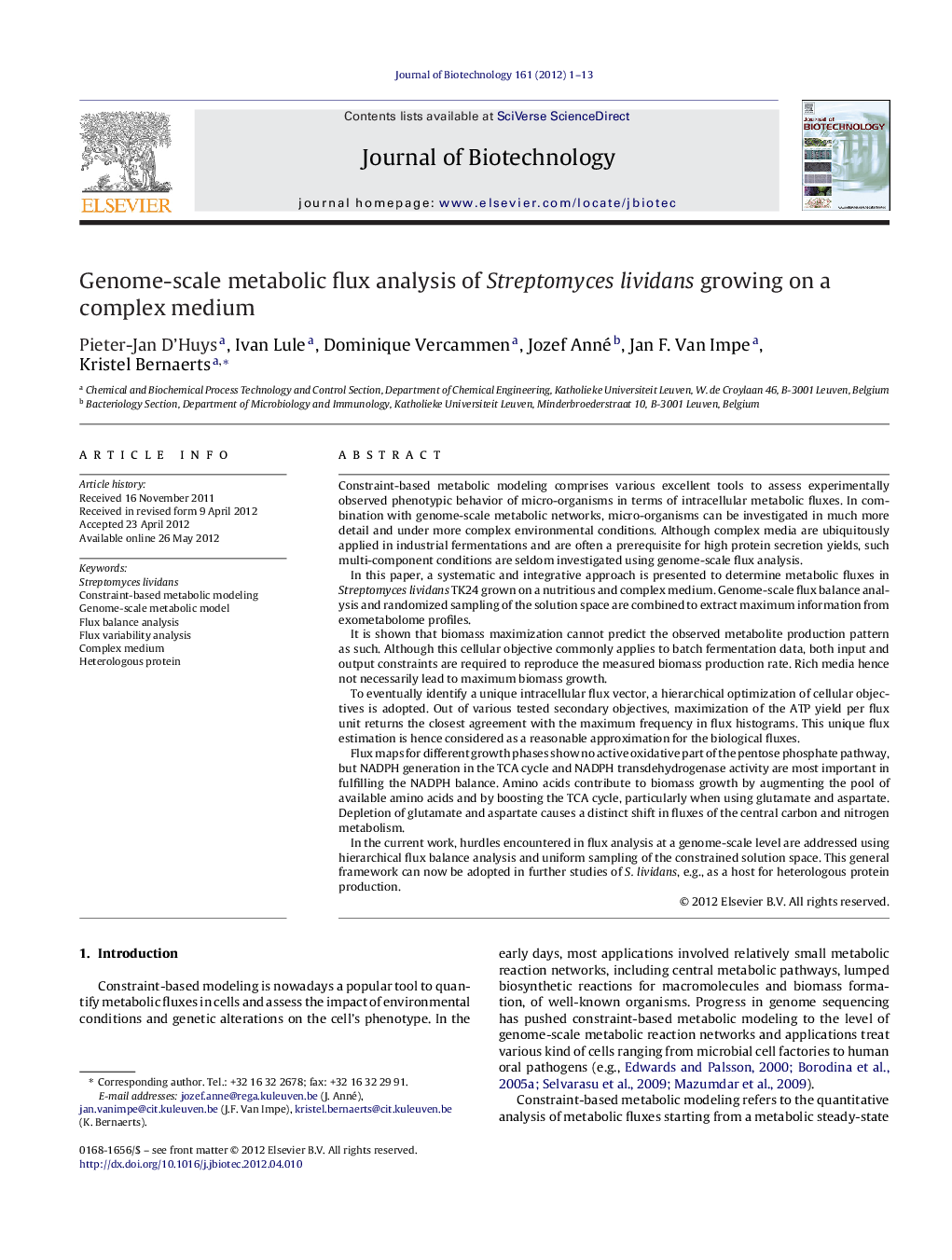| کد مقاله | کد نشریه | سال انتشار | مقاله انگلیسی | نسخه تمام متن |
|---|---|---|---|---|
| 23702 | 43465 | 2012 | 13 صفحه PDF | دانلود رایگان |

Constraint-based metabolic modeling comprises various excellent tools to assess experimentally observed phenotypic behavior of micro-organisms in terms of intracellular metabolic fluxes. In combination with genome-scale metabolic networks, micro-organisms can be investigated in much more detail and under more complex environmental conditions. Although complex media are ubiquitously applied in industrial fermentations and are often a prerequisite for high protein secretion yields, such multi-component conditions are seldom investigated using genome-scale flux analysis.In this paper, a systematic and integrative approach is presented to determine metabolic fluxes in Streptomyces lividans TK24 grown on a nutritious and complex medium. Genome-scale flux balance analysis and randomized sampling of the solution space are combined to extract maximum information from exometabolome profiles.It is shown that biomass maximization cannot predict the observed metabolite production pattern as such. Although this cellular objective commonly applies to batch fermentation data, both input and output constraints are required to reproduce the measured biomass production rate. Rich media hence not necessarily lead to maximum biomass growth.To eventually identify a unique intracellular flux vector, a hierarchical optimization of cellular objectives is adopted. Out of various tested secondary objectives, maximization of the ATP yield per flux unit returns the closest agreement with the maximum frequency in flux histograms. This unique flux estimation is hence considered as a reasonable approximation for the biological fluxes.Flux maps for different growth phases show no active oxidative part of the pentose phosphate pathway, but NADPH generation in the TCA cycle and NADPH transdehydrogenase activity are most important in fulfilling the NADPH balance. Amino acids contribute to biomass growth by augmenting the pool of available amino acids and by boosting the TCA cycle, particularly when using glutamate and aspartate. Depletion of glutamate and aspartate causes a distinct shift in fluxes of the central carbon and nitrogen metabolism.In the current work, hurdles encountered in flux analysis at a genome-scale level are addressed using hierarchical flux balance analysis and uniform sampling of the constrained solution space. This general framework can now be adopted in further studies of S. lividans, e.g., as a host for heterologous protein production.
► Constraint-based metabolic modeling of S. lividans grown on multiple substrates.
► Genome-scale flux balance analysis compared with randomized solution space sampling.
► Hierarchical flux balance analysis to identify unique flux vector.
► Flux maps for different growth phases are identified.
► NADPH generation through TCA cycle and balanced via NADPH transhydrogenase activity.
Journal: Journal of Biotechnology - Volume 161, Issue 1, 15 September 2012, Pages 1–13